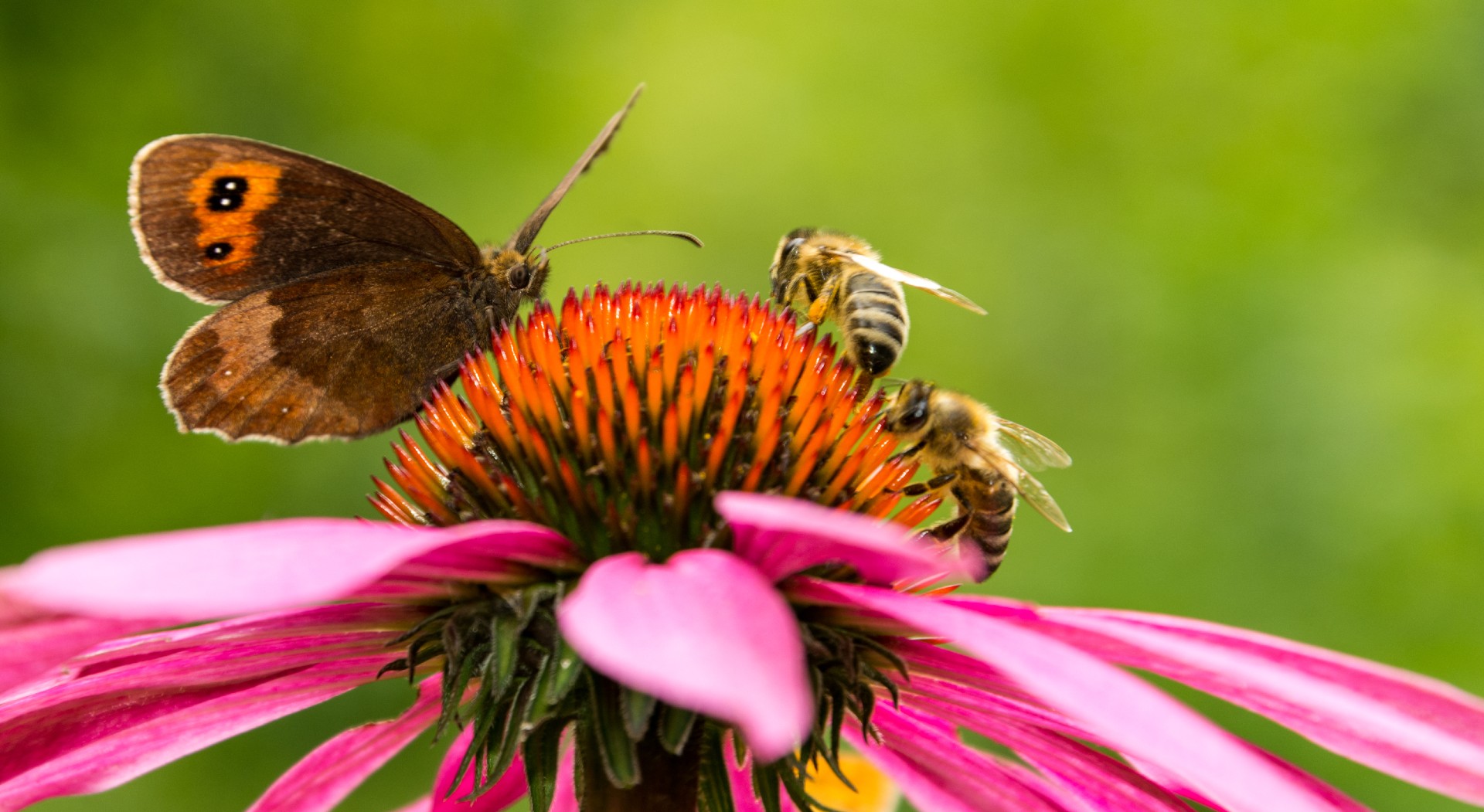When it comes to pollination, there is always something new to learn. As climate change directly impacts pollination seasons and pollinator numbers, understanding the who, what, where, when, and why reminds us why pollination is so important to keep the ecosystem healthy. Likely, some, not a majority, of the food on the table is due to successful pollination efforts. Some of the most well-known foods that require pollination to be available every year are apples, oranges, almonds, acorns, pears, peaches, cherries, blueberries, cranberries, tomatoes, kiwis, figs, strawberries, blackberries, lemons, limes, grapes, coffee, and more! Even if you are not a fruit and veggie regular, the thought of no coffee is terrifying!
Who Are The Pollinators?
Over millions of years, pollinators have adapted to a variety of plants, blooms, and pollen sources. Some say that plants have adapted to different pollinators as well. Regardless, the marriage of the two and the adaptation of both have benefited the environment, as well as people!
Pollinators include bees, beetles, butterflies, flies, hummingbirds, moths, and even wind! Bees collect pollen while beetles “mess up” the soil and pollinate through excrement. Butterflies flutter around, and hummingbirds seem to move too quickly to catch a glimpse. Flies, as pesky as they are, are a contributor to pollination. Moths exist in significantly larger numbers than butterflies but rarely get the credit they deserve for their pollination efforts. Moths are active after the sun sets, making them valuable when everyone else has gone back home. Bees, hummingbirds, and butterflies don’t forage at night.
Although wind isn’t a living thing, it is a significant contributor to pollination. If you have never observed a tree releasing pollen dust clouds due to gusts of wind, it is quite the sight to see! Those with allergies may cringe at the amount of pollen released, but this is very common, and the wind is solely responsible for its release.
What About Pollination?
Plant reproduction is reliant on pollination. As pollen moves from one plant to another, the plant, tree, or flower is fertilized and can yield fruit and seeds later. Tomato plants and blueberries have pollen in little spores on the anthers and must be shaken by helpful bees to get the pollen loose. Bumble bees are responsible for moving thousands of pollen grains in one second! Bees are one of the most essential pollinators, which is why there are growing efforts to protect them and treat bees humanely when they need to be removed.
Where Do Pollinators Come From?
The habitats of the different pollinators depend on their life cycles. Bees use mud, leaves, sand, and plant resin to nest, while butterflies feed on specific plants. Bees have more options for nesting and raising their young. Social bees work collectively and have an entire hive dedicated to raising baby bees! Pollinators will stay within a certain distance of foraging courses so they can collect enough nectar for themselves. When humans farm, develop housing, and construct new roads, pollinator habitats are fragmented and can make it impossible to survive. All pollinators require food, water, and shelter. Bees and other insect pollinators can’t swim, so water sources need to be shallow.
When Does Pollination Occur?
Pollination occurs year-round, with plants, flowers, and climates all being factors. As seasons change, competition among pollinators shifts, allowing continual bloom throughout the year, which is why humans enjoy a constant food supply. In Spring, pollinators use plants to collect food to recover from hibernation. Spring is when fruit trees are visited most frequently, and monarch butterfly migrations bring these species thousands of miles as they follow milkweed growth. Monarchs can travel 30 miles in one day!
In summer, private gardens bloom and peak in pollination. The long days of sunlight allow pollinators to work and forage for more extended periods. Fall allows foraging from late-blooming plants and gives pollinators time to collect ample food for hibernation. Butterflies, bees, and hummingbirds will have little or no activity in the winter while decaying plants lie dormant.

Get help with your beehive or bee swarm removal! Call Today 760-224-3040 Or 951-265-8292!
Why Does Pollination Matter?
The biggest question is why pollination matters. The process balances our ecosystem and creates a healthy and strong system. Many foods we use daily without much thought rely on the health of pollinators so they can do their roles in the pollination process. Many fruits, nuts, most berries, vegetables, and coffee, as well as vanilla, all need pollinators year after year.
Today, pollinators are at risk due to habitat loss, degradation, and fragmentation. The use of toxic pesticides and herbicides hurts pollinators. People can help keep this food on the table by supporting pollination through friendly habitats and diverse landscape choices. Depending on which region you live in, there are native plants that can help pollinators by giving them access to the best plants. Working with a reputable and humane bee removal company when a beehive needs to be removed is vital to re-homing bees and keeping the local ecosystem in balance. Contact D-Tek Bee Removal at 760-224-3040 today if you have a bee concern in your area.
